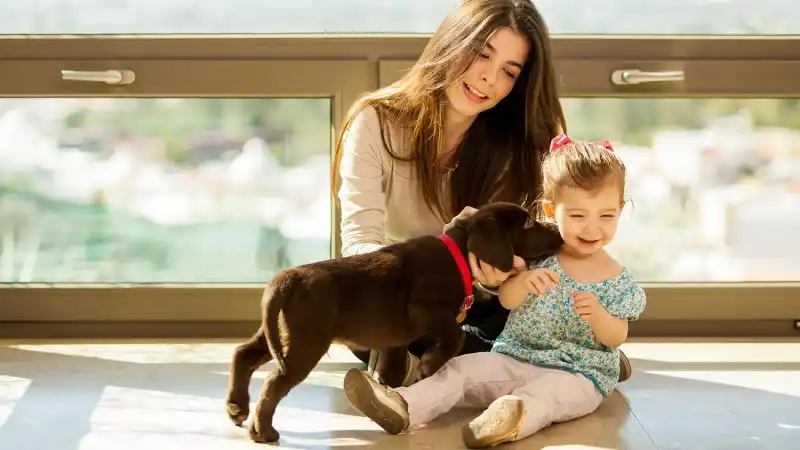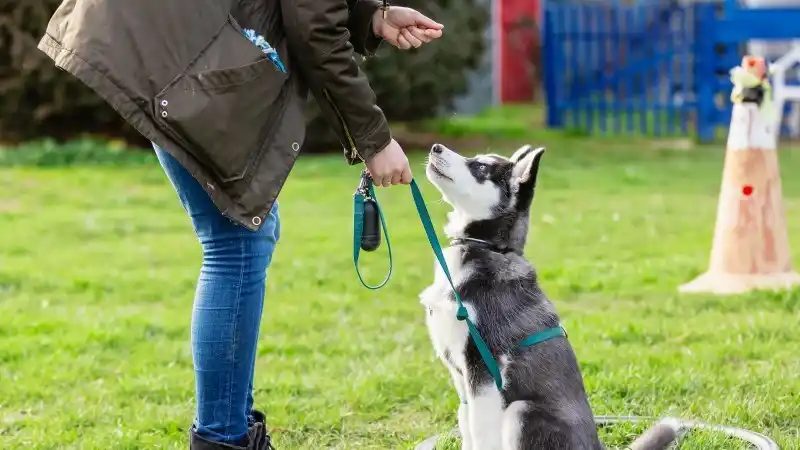The Importance of Training Your Dog
It’s officially back-to-school season in the United States. Families are gathering supplies, switching from their care-free summer lifestyle to the more structured schedule of a school routine, and spending more time away from their houses. While you’re getting into the swing of the hustle and bustle of the school year, don’t forget to consider your dog’s education. This is a great time to send your dog “back to school” with training sessions.

Why Is Training Your Dog So Important?
Well-trained dogs are happy dogs. Training your dog gives structure to their lives, challenges them mentally, and helps build the bond between owner and dog. When you train your dog, they learn more about the world around them and how they fit into it. Much like humans, this provides a comforting sense of purpose and the positive reinforcement recommended by most dog trainers also gives your pup a sense of achievement.
When Is the Best Age to Train Your Dog?
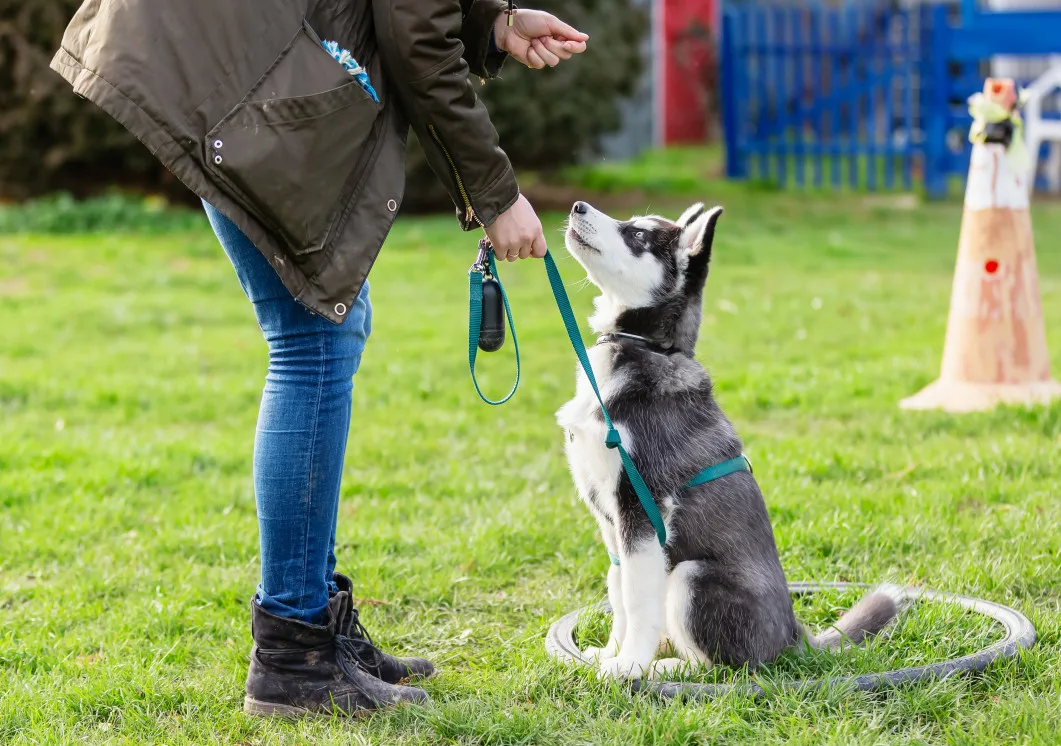
Ideally you should train your dog as early as possible. Most experts recommend you start behavioral training at 7-8 weeks of age, because they’re starting to figure out the world around them. Puppies can learn and socialize more easily at this age before other habits and experiences can develop. Training this early is only an option if you’re able to adopt your dog from puppyhood; however, if you’re adopting an older dog from a shelter or have had your dog for many years, you can still train your older dog.
Adult and senior dogs will also gain the same benefits from training exercises that puppies do. Despite the old adage, it’s entirely possible to teach your dog new tricks. Additional training will not only help reinforce your dog’s prior training, but it’ll keep their mind and body active so they can be as healthy as possible.
Are Professional Training Courses Worth the Cost?
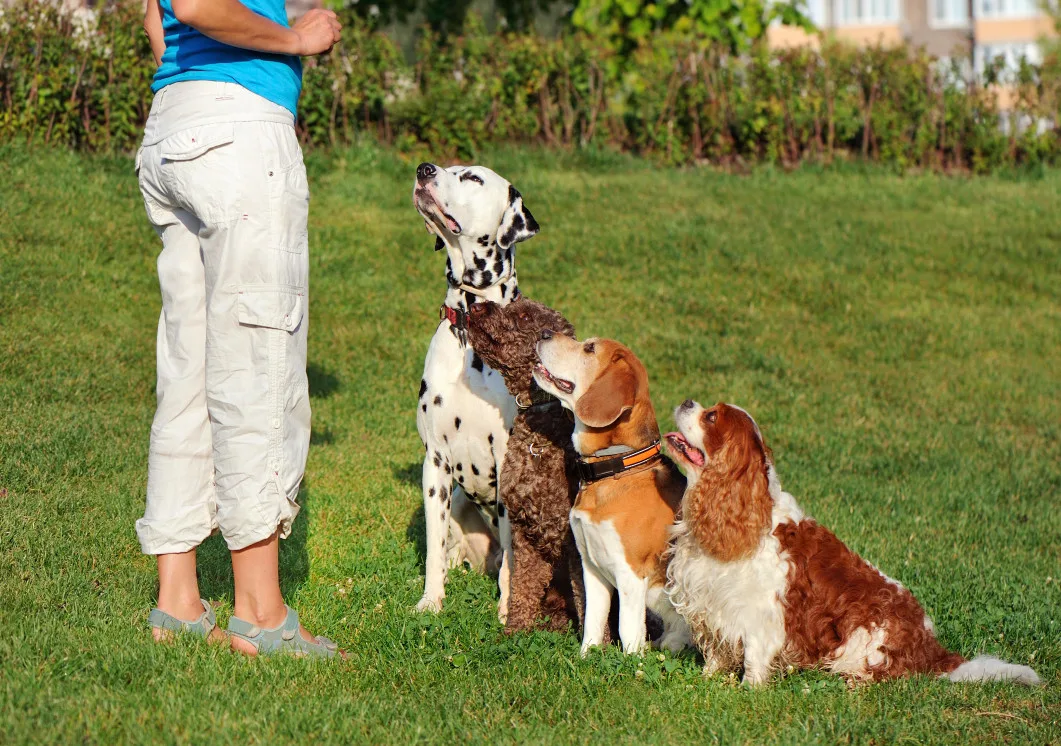
When you start training your puppy, you’ll likely see a lot of options for training classes. These are a great option to help your puppy, but they’re by no means a catch-all. Even with a professional trainer and regular classes, your puppy will need training with you and all members of your household. Remember, training your puppy isn’t just about their own behavior, but also about teaching the humans in their lives how to interact with them and properly issue commands.
Training courses are most often held in a group setting, so you and your dog will not only gain the experience of a professional dog-training expert, but also the socialization of working with and around other dogs and humans. Much like when children go to school with other children, your dog will learn to be comfortable around other dogs as well as what behavior is acceptable. Additionally, you can learn from the experiences of others and get an outsider’s perspective on your dog’s behavior. If you’re struggling with an aspect of training, or your dog is having trouble picking up on a command, the group setting led by a professional dog trainer may provide the perfect solution by offering alternative options. This alone can be an invaluable asset from group training classes for your dog.
How to Pick the Best Dog Training Classes
Not all training classes are created equal, and there are many options available for you to find the perfect option for your dog, budget, and schedule. You’ll need to be present for training classes in most cases. Typically, only severe behavioral issues would cause a trainer to take your dog into their care without you, so make sure you and your family have the time to devote to the class. Similarly, you’ll want to find a class that is conveniently located to your home, so it’s easy to attend.
When you start researching your dog-training class options, consider what your dog needs. If your dog is just starting out and generally receptive to training, you can work with almost any trainer and see good results. However, if you’re struggling with your pup or looking for specialized training for events or working dogs, take the time to do your due diligence.
General obedience training, especially for young puppies, is best handled in a group-training session. As mentioned above, this helps to socialize your puppy as they learn not only from you and their trainer, but also the puppies around them. Older dogs, or dogs going into specialized programs may benefit from one-on-one training with you, your trainer, and your dog, but many trainers prefer other dogs to be present to help aid by example.
Finding a trainer that you trust and whose methods align with your lifestyle is very important. Talk to your vet, friends, and family, and do your research online to find the best fit for your (and your dog’s) personality.
Don’t be afraid to interview a potential trainer before enrolling in their class and ask where they received their dog-training certification. While certification isn’t required in many states, knowing your future trainer has received their training and certification will give you the peace of mind that they are experts in their field.
How to Train Your Dog Yourself
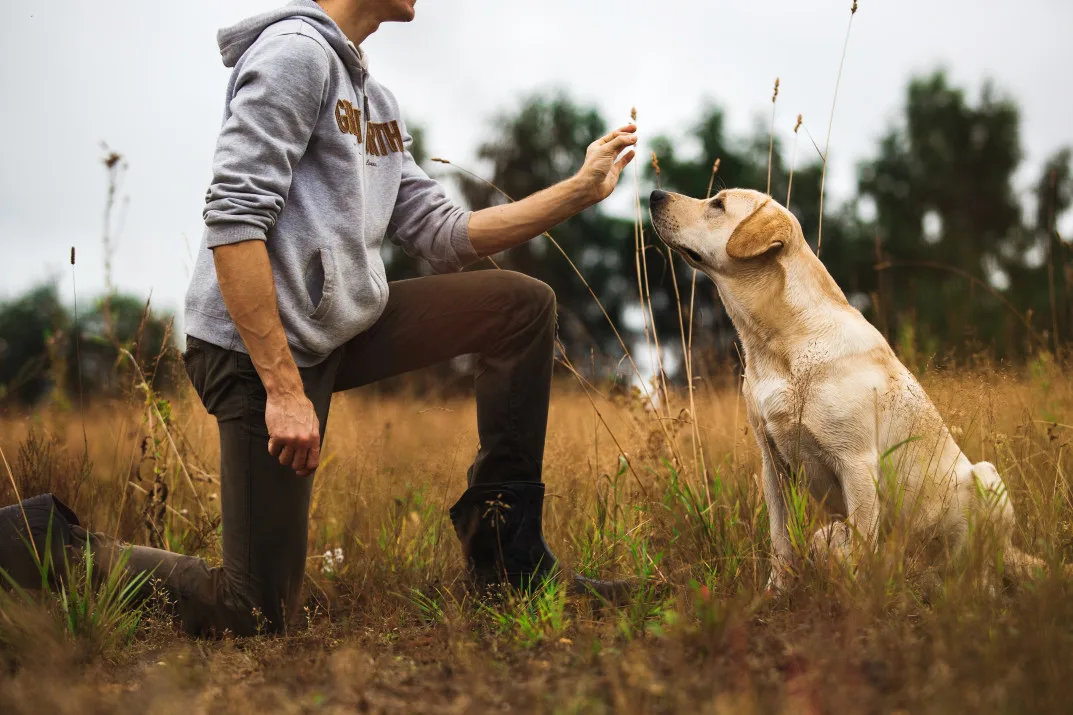
If this isn’t your first dog or your budget doesn’t allow for it, training at home is always an option. Considering that less than 5% of dog owners attend professional training classes, you’re in good company. However, if you choose to go this route, make sure you take the time to thoroughly train and socialize your dog. It not only makes you a responsible dog owner, but makes your dog a good citizen.
Training your dog at home is about more than just housebreaking them and teaching them to sit. They need to be socialized with other humans and dogs so they’re able to interact with their world in a healthy manner. It’s important to train your dog to come on command, leave objects alone, and be non-reactive to other humans, noises, and animals. These are just the basics of training your dog. You may want to train them to do tricks or tasks on command, but you’ll need to set up a strong foundation first.
You can build a foundation of trust when training your dog with positive reinforcement and repetition. Work with your dog patiently and often to allow the behavior to sink in and become second nature to them.
Break the desired behavior down into small parts. For example, if you want to teach your dog to play dead on command, start by teaching them to sit. Once they’ve mastered that step, teach them to lay down, then roll over, and then hold that position for a “play dead” trick.
Dog-Training Resources
There are so many resources to help you learn to properly train your puppy and dog, so you are sure to find one that works for you. From training books and breed guides to online resources, you can easily find written works by experts on how to interact with your dog and get the desired behavior from them.
If you prefer something digital, the web is a great place to find instructional videos and even online trainers. Many trainers have social media accounts where they share training advice and even how-to’s to help you train your dog. Find multiple sources you trust and follow them to learn as much as possible.
No matter what route you decide on, sending your dog “back to school” with training is the best way to help them live a happy life in your home. It’s an important part of responsible pet ownership and holistic pet health, so start your training regimen today. While you’re focusing on the mental and emotional well-being training your pet offers, don’t forget to protect their physical well-being.
Enroll in the Accident and Illness plan from AKC Pet Insurance to help cover the rising cost of many vet expenses. Get a quote today to keep your pet as healthy as possible.
Sources:
https://loyal-companions.com/the-importance-of-training-your-dog/
http://www.dogwatchwestmass.com/blog/what-is-the-best-age-to-train-a-dog/
https://www.akc.org/expert-advice/training/training-your-senior-dog/
https://www.akc.org/expert-advice/training/puppy-training-classes/
http://canebaypetsitting.com/Blog/are-puppy-training-classes-worth-it/
https://www.akc.org/expert-advice/training/find-dog-training-class/
https://valleyveterinaryhospital.net/blog/5-benefits-of-attending-dog-training-classes/
https://www.akc.org/expert-advice/training/how-to-become-a-dog-trainer/
https://www.dogster.com/lifestyle/dog-training-statistics-benefits-force-free-training
CJ has always wanted to be a writer. She even threatened to drop out after her first day of kindergarten when they weren’t immediately going to teach her to read and write. Fortunately, she stayed in school, earned her degree in Creative Writing from Christopher Newport University, and now gets to live her best life with her husband, 3 Japanese Chins, and cat writing for AKC Pet Insurance.
READ MORE ARTICLES
